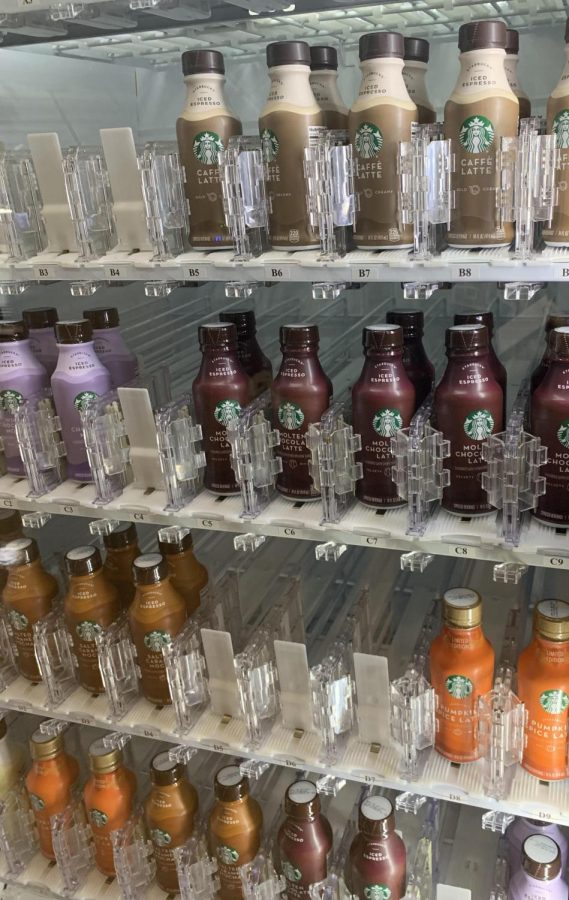Self serve Starbucks
Product is moving fast.
October 18, 2019
The arrival of the Starbucks vending machine last week has been a buzz around the school. Many Roadrunners have a daily Starbucks habit to begin with and most spend $4 or more per drink, so for that same $4, students can now purchase bottled Starbucks Frappes and Iced espresso drinks including white chocolate mocha, salted caramel and pumpkin spice in the dining hall.
Most teens are consuming coffee – it’s a fact. A 2014 study in the Journal Pediatrics reports, “Approximately 73% of children consumed caffeine on a given day,” The study goes on to say, “Historically, soda and tea have been the main sources of caffeine in the diets of children and adolescents; however, the availability and sales of energy drinks, specialty coffee drinks, and food products containing caffeine have dramatically increased over the past decade and are often marketed toward children and adolescents.”
Ms. Kwitkowski, Food Service Director of Quest Food Management Services, made the decision to bring the Starbucks Vending Machine to Naz. “I was talking to a manager from another school at our Quest kick off meetings over the summer and she said that had one delivered last school year and the kids at her school loved the Starbucks’ products. I thought I would give it a try here.”
Within the first week, the product was sold out which suggests the popularity of the new offerings.
Kwitkowski notes that the reason why the drinks could not be sold out of the refrigerator is that sometimes items disappear without being paid for. The designated vending machine is intended to eliminate theft by containing the notably more expensive drinks in a secure machine.
While some are quick to point out the negative effects of caffeine, there is research to support that coffee consumption is actually good. According to Caffeine Informer, “A typical serving of coffee contains more antioxidants than typical servings of grape juice, blueberries, raspberries, and oranges.”
Like all things, coffee should be consumed in moderation and the safe quantity is really not clear. According to Michigan Health Newsletter from the University of Michigan, “Adolescents ages 12 to 18 should cap daily caffeine intake at 100 mg (the equivalent of about one cup of coffee, one to two cups of tea, or two to three cans of soda).”
But Kidshealth.org reports, “consuming as little as 100 mg of caffeine a day can lead a person to become “dependent” on caffeine. This means that someone may develop withdrawal symptoms (like tiredness, irritability, and headaches) if he or she quits caffeine suddenly.” So, students should be aware of how much caffeine they are consuming.
“I have a Starbucks every day to get through the school day. Having the vending machine here helps when I’m running late and can’t stop at Starbucks. I’m more motivated to get here now,” says Sophomore Lauren Esparza.
While some students have embraced the addition, others plan to stick to the Starbucks stores. Junior Sylvia Kuciemba is a caffeine enthusiast who makes a Starbucks stop multiple times each week. “In my opinion the vending machines are inadequate, they are too expensive. I would rather go to Starbucks in the morning and get a drink that I actually like and can drink for the same amount of money.”
Compared to the coffee shop itself, the vending machine sells only a fraction of what Starbucks has to offer. Junior Jazmin Galan says,” The [bottled] pumpkin spice latte tastes kind of bad compared to if I went to Starbucks and bought one.”

